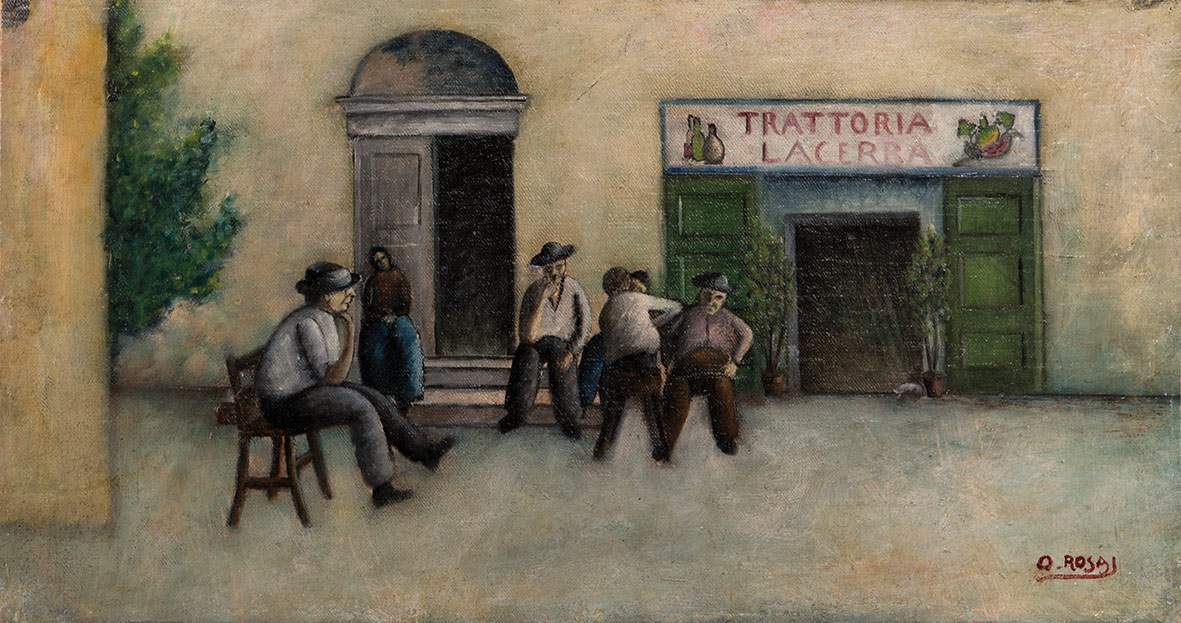From April 9 to July 12, 2020, the Palazzo del Podestà in Montevarchi (Arezzo) hosts the exhibition Ottone Rosai, dedicated to the great Florentine artist active in the first half of the 20th century. Ottone Rosai (Florence, 1895 - Ivrea, 1957), reread the novelties of his time in the light of the great art of the Tuscan Tre-Quattrocento. The Montevarchi exhibition, curated by Giovanni Faccenda (an expert on Rosai and curator of the general catalog of his works), is held on the centenary of Rosai’s first Florentine solo exhibition, which brought him to the attention of the art world in 1920.
The exhibition brings together fifty of Rosai’s works, half drawings and as many oils, all referring to a precise moment in the artist’s life: the years between 1919 and 1932. The works all come from private collections, and the public will be able to admire very well-known canvases but also some completely unpublished works, which have emerged from the research that Giovanni Faccenda continues to carry out in private collections and in the homes of those who, in Tuscany but not only there, had relationships with Rosai or with his gallerists and heirs.
“One of the greatest peculiarities of this public exhibition,” the scholar anticipates, “comes from the rediscovery of a dozen absolute masterpieces by Rosai from the 1920s and 1930s, all from a private collection in Rome, present at the exhibition at Palazzo Ferroni, in Florence, in 1932, and documented in the first volume of the Catalogo Generale Ragionato delle Opere di Ottone Rosai (Editoriale Giorgio Mondadori, Milan, 2018), which I edited. Alongside them are the best-known excellences of a period (the interwar period) that represents the aristocracy of Rosai’s painting and drawing.Added to this is the desire to overcome an outdated and limited exegetical reading of the work of this master among the greatest of the twentieth century, often lacking the necessary cultural references that must be grasped in it (Dostoevsky, Campana and Palazzeschi, among others) and a philosophical reflection that takes into account the affinities with the thought of Schopenhauer and the cosmic pessimism of Leopardi.”
“When Professor Faccenda proposed us to create the exhibition, and introduced us to the complex and particular history of this master of twentieth-century art,” says Silvia Chiassai Martini, mayor of Montevarchi, “we were captivated by the delicacy and the great expression of humanity that emerges from his works. We thought that hosting an exhibition of his masterpieces in our Palazzo del Podestà, in a place returned to its former beauty, was a cultural opportunity that we had to seize and accept in order to offer visitors a unique exhibition.”
The exhibition is open Thursday through Sunday. Thursdays and Fridays from 3 to 7 p.m., Saturdays, Sundays and holidays from 10 a.m. to 8 p.m. For info: www.comune.montevarchi.ar.it, phone 055-91081, Facebook Comune di Montevarchi, Twitter @montevarchi, Instagram incomunemontevarchi, Youtube Video Montevarchi.
Image: Ottone Rosai, Trattoria Lacerba (1921; oil on canvas applied to panel, 20.3x39 cm)
 |
| An unpublished Ottone Rosai on display in Montevarchi for the centenary of his first Florentine solo exhibition |
Warning: the translation into English of the original Italian article was created using automatic tools. We undertake to review all articles, but we do not guarantee the total absence of inaccuracies in the translation due to the program. You can find the original by clicking on the ITA button. If you find any mistake,please contact us.